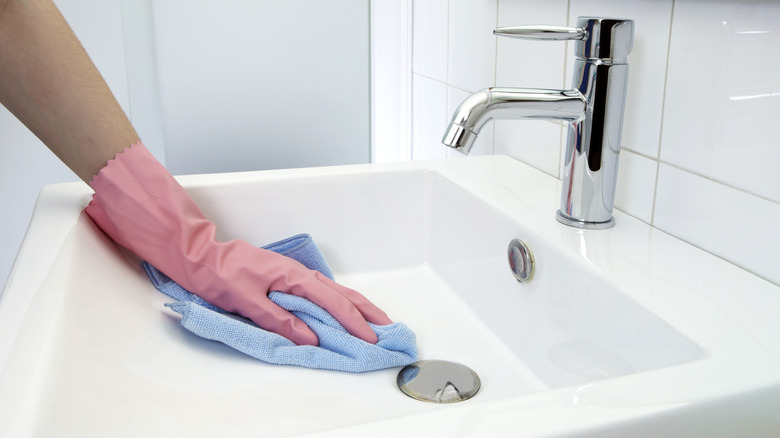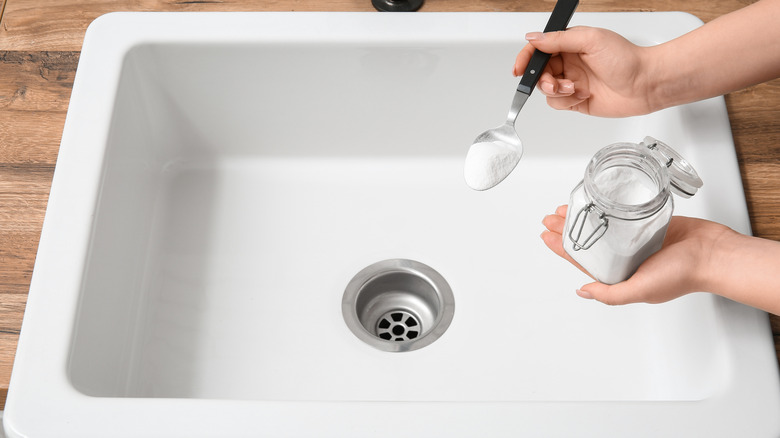Baking Soda And Hydrogen Peroxide: Your Go-To Mixture For Porcelain Sinks
When it comes to choosing a sink material, it's hard to go wrong with porcelain. There are many benefits of installing a porcelain sink in the kitchen or bathroom —it's durable, it goes with just about any design style, and it's resistant to heat and cold. However, even an easy-to-clean material like porcelain can develop stains or hard-to-remove grime from time to time, which is where a mixture of baking soda and hydrogen peroxide comes in handy.
Since baking soda's gritty texture acts as a mild abrasive that can scrub gunk without scratching most surfaces, it's a go-to household cleaner. Peroxide also has numerous cleaning uses, as it can lift stains and disinfect. These two substances can be safely combined to create a powerhouse of a cleaning paste, and there are many ways you could be using baking soda and hydrogen peroxide to clean, including tackling a grimy or stained porcelain sink. As an added benefit, these two products are relatively inexpensive and likely already in your cupboard or medicine cabinet, making them easy to reach for in a pinch.
How to properly use baking soda and peroxide to clean your porcelain sink
Before you get to scrubbing, there are a few things you need to know. First, you'll need 3% hydrogen peroxide, which is what is sold at most grocery and drug stores. Avoid using peroxide that has a higher concentration, as it's generally not safe for cleaning or handling. It's also important not to over-scrub a porcelain sink, as you don't want to leave scratches on the surface. Baking soda is unlikely to scratch porcelain; however, if you scrub aggressively or use abrasive scouring pads, you may cause some damage.
Ready to get cleaning? Start by rinsing out the sink and wiping away any debris or gunk with a paper towel or washcloth. Then, sprinkle baking soda into the sink and scrub all areas with a microfiber cloth. Next, dampen the towel with peroxide or spray it directly onto the baking soda-covered sink, and use your microfiber cloth to scrub away grime and stains. To disinfect, allow the hydrogen peroxide to sit for five to ten minutes, or until it stops fizzing. You may need to apply extra baking soda and peroxide to areas with discoloration.
Once you've finished cleaning and disinfecting, rinse the sink and wipe it dry with a fresh microfiber cloth. With the sink germ-free and stain-free, following a few key tips for keeping your porcelain sink clean, such as regularly rinsing it out and performing a deep clean every week or two, will help maintain its appearance and cleanliness.

